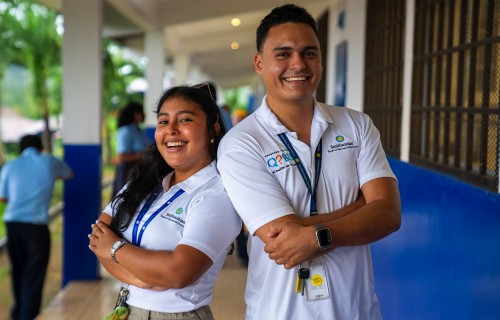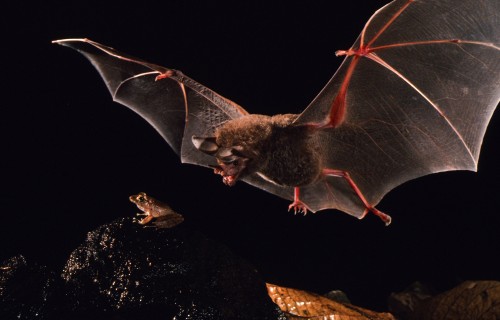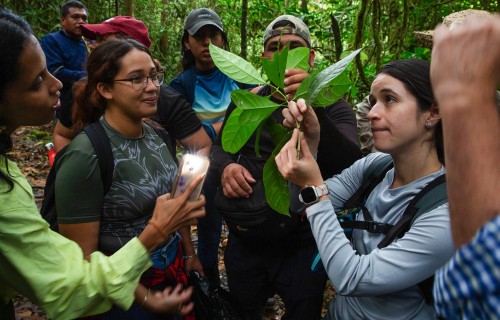Leafcutter ants have blind
spots, just like truck drivers
Fortuitous
discovery
Accidental tree wound reveals novel symbiotic behavior
Text by Leila Nilipour
A group of high school students describe how Azteca alfari ants respond to damage to their host plant
One afternoon, during the early days of the COVID-19 pandemic in Panama, a bored teenager with a slingshot and a clay ball accidentally shot entry and exit holes in a Cecropia tree trunk. These are “ant-plant” trees, which famously cooperate with fierce Azteca ants; the trees provide shelter and food to the ants, and in exchange the ants defend their leaves against herbivores. The next morning, to his surprise, the Azteca alfari ants living within the Cecropia trunk had patched up the wound.
This unexpected occurrence drove five curious high school students, with time on their hands, to participate in the Smithsonian Tropical Research Institute’s (STRI) volunteer program, and they enlisted STRI scientist William T. Wcislo’s help in devising their experiment. Despite significant movement restrictions during the first wave of the pandemic, they roamed their neighborhood drilling holes into Cecropia trees and documenting the ants’ responses to the damage.
During the pandemic, five curious high school students accidentally discovered how Azteca alfari ants respond to damage to their Cecropia host trees. Credit: Donna Conlon.
They found that as soon as the plants had holes drilled into them, the ants ran to the wound area and began patching it up. Within 2.5 hours, the size of the hole had been significantly reduced and it was often completely repaired within 24 hours.
Although some Azteca ants are known to defend their Cecropia host plants against herbivores, these new results, published in the Journal of Hymenoptera Research, reveal that not only do the ants behave in ways to minimize damage to their hosts, but when damage does occur, they actively work to fix it, particularly when their brood is directly threatened.
“I was totally surprised by the results,” says William Wcislo. “And I was impressed by how they developed a simple way to test the idea that ants repair damage to their home.”
Some ants and plants have developed symbiotic relationships, in which ants may contribute to protecting their host plant against threats, while receiving food and shelter in exchange. Credit: Jorge Aleman, Smithsonian Tropical Research Institute.
Sloths and silky anteaters often visit Cecropia trees and their sharp toenails sometimes pierce the wood, so the researchers speculate that these occurrences, which are far more common and ancient threats to the Cecropia than teenagers shooting clay balls at them, could have led Azteca alfari ants to evolve the observed repair behavior when their host plant is damaged.
Their experiment also left them with new questions, since not all of the ant colonies repaired the damage to their host plants. Understanding what factors influence the ants to take action could be the subject of future research for these budding scientists, although perhaps to be addressed after graduating from high school.
Sloths that visit Cecropia trees often pierce the wood with their sharp toenails, which could be one explanation to the evolution of the observed repair behavior by Azteca alfari ants. Credit: Steve Paton, Smithsonian Tropical Research Institute.
“Sometimes messing around with a slingshot has a good outcome,” said lead author Alex Wcislo. "This project allowed us to experience first-hand all the intricacies behind a scientific study. All in all, it was a great learning experience, especially considering the difficulties associated with fulfilling this due to COVID-19.”
Reference: Wcislo A, Graham X, Stevens S, Toppe JE, Wcislo L, Wcislo WT (2021) Azteca ants repair damage to their Cecropia host plants. Journal of Hymenoptera Research 88: 61-70. https://doi.org/10.3897/jhr.88.75855
















